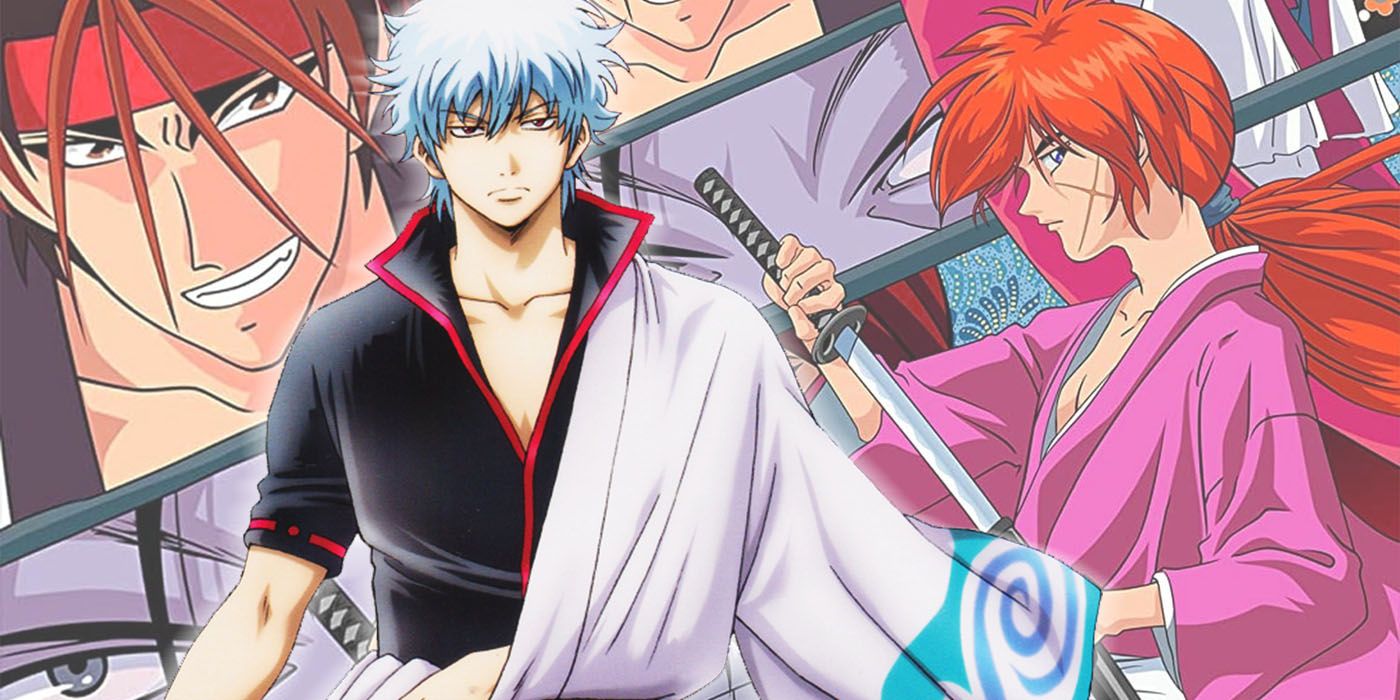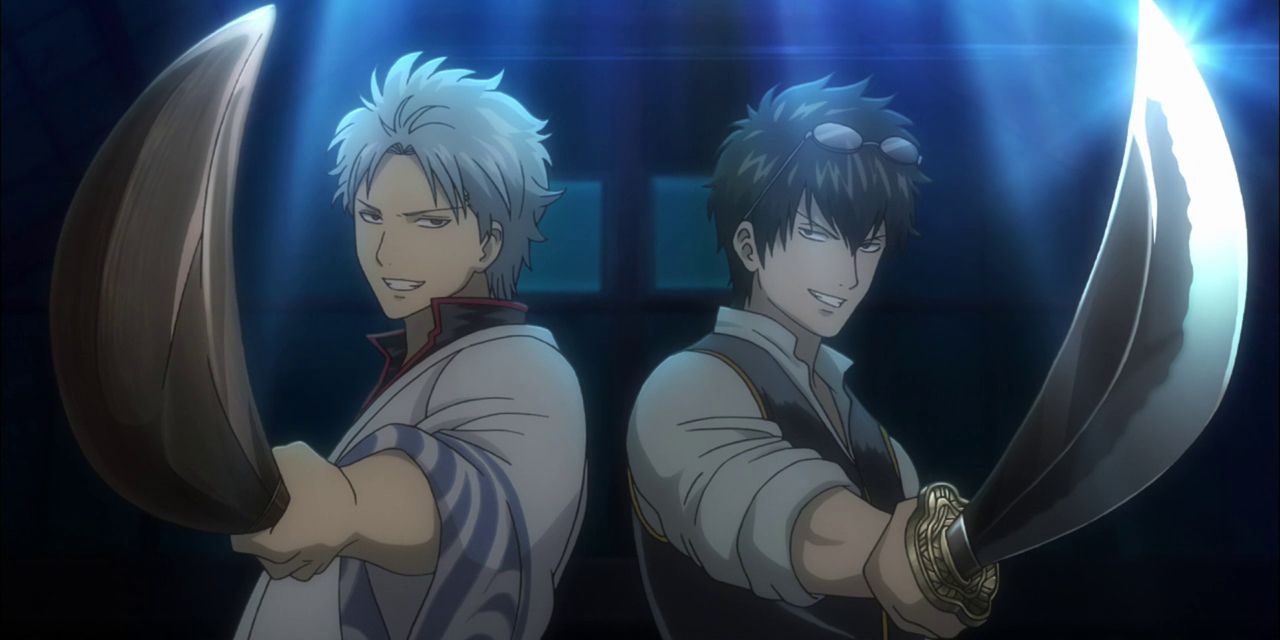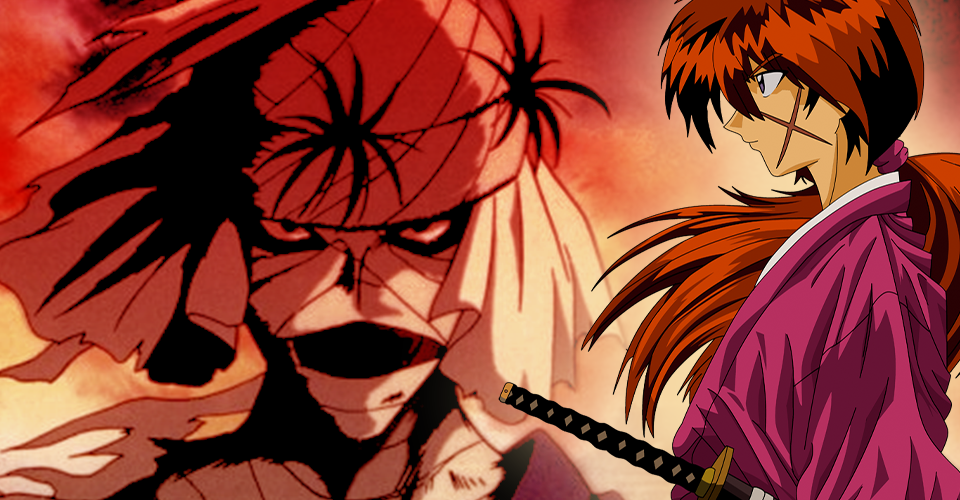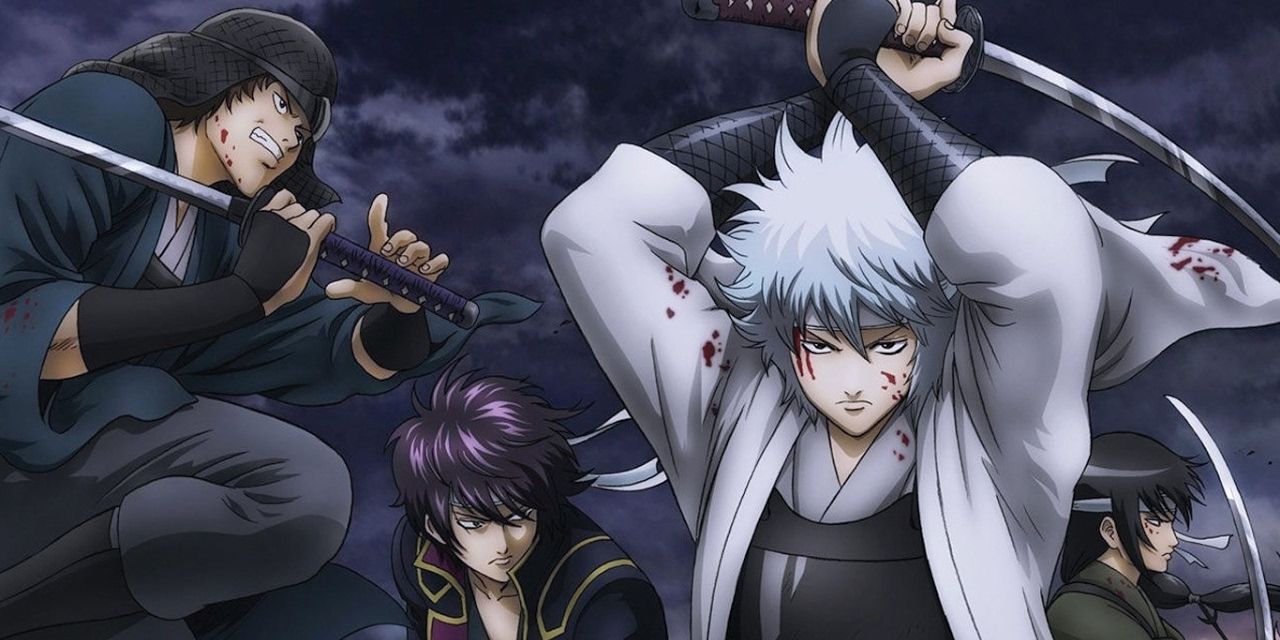Hideaki Sorachi's Gintama is a difficult anime series to categorize. There are elements of comedy, adventure, period drama, samurai film, yakuza film, police drama and crime drama. It also covers science fiction, fantasy, game show, mecha, romance and any other genre Sorachi feels like writing about. Despite the unique blend of concepts, there's at least one other anime with similar core themes and story elements: Nobuhiro Watsuki's Rurouni Kenshin.
As its predecessor in Shonen Jump, it seems more than likely that Gintama borrows some story elements from Rurouni Kenshin, and Sorachi is no stranger to borrowing from fellow mangaka. Gintama constantly references both preexisting and ongoing Shonen Jump series, Rurouni Kenshin included. The resemblance, however, goes beyond simple references and goes much deeper. Finding all the similarities and differences will require a more in-depth look at both series, as well as the history of Japan.
One of the most notable similarities is the setting -- both series take place in the post-Edo period of Japan. In both real-life and Rurouni Kenshin, what follows is the Meiji Restoration, a period where Japan works to modernize itself and more closely resemble its foreign contemporaries like America and Europe. In Gintama, Japan is instead modernized by aliens (or "Amanto"). This causes Gintama's version of Edo to have an aesthetic that blends past, present and future. As a result of the shift in times, both series tackle themes of tradition vs. progress.
Both Sorachi and Watsuki write specifically about samurai dealing with the change in times. Following the Edo Period is a time of peace, where swords are banned and samurai are deemed obsolete. The few who are still allowed to carry swords do so as government dogs.
The protagonists of both series, Kenshin (Rurouni Kenshin) and Gintoki (Gintama), find workarounds to the sword ban. Kenshin carries a Reverse-Blade sword that can only cut with its back side. Gintoki uses a bokuto, a wooden sword which, for some reason, is just as strong as any steel sword. They each meet opposition from authorities over their blades, but are ultimately given a pass.
Another part of living at the start of a post-war era involves the samurai having their way of life upturned. Without war, the warriors' ability to take life is rendered virtually obsolete. Kenshin spends ten years wandering Japan. Gintoki, having no special talents outside swordsmanship, founds Yorozuya, a business that performs odd jobs for negotiable prices. Neither of these former soldiers finds true purpose in their lives until the events of their respective series begin.
While Kenshin and Gintoki acquiesce to the change in times, they are put at odds with enemies who aren't as content with sheathing their blades. A couple of their most notable nemeses, Makoto Shishio and Shinsuke Takasugi, share this trait and a good deal more. Both villains command forces with the intent of violently overthrowing their new government. They have commanding presences and can turn into absolute monsters in a fight. They also both happen to wear bandages, dress in purple outfits, and smoke a kiseru. However much Sorachi meant to borrow from Watsuki, this seems close to excessive.
Kenshin and Gintoki are unable to comply with their enemies' goals of returning Japan to war. Despite their proficiencies as soldiers, they cannot give up the new life and friends they've made for themselves. As a result, they are forced to confront Shishio and Takasugi in order to save Japan and protect their friends.
Gintama and Rurouni Kenshin are also similar in their interpretations of Bushido, the way of the warrior. Being a samurai isn't just about swinging a sword around. The samurai's resolve, discipline and other virtues make them commendable both as soldiers and as people. By maintaining these virtues, their warrior spirit is allowed to live on even in times of peace.
Of course, the two series' resemblances could simply be a result of covering similar material. With both Sorachi and Watsuki writing about the same era in the same magazine for the same audience, it seems only natural that some of their ideas overlap. Regardless, those similarities are difficult to overlook.
There are more likenesses between Gintama and Rurouni Kenshin, but these are some of the bigger ones. However similar these anime may be, both handle their material in unique ways that make each of them worth reading. Gintama may have superior comedic writing, but Rurouni Kenshin's focus on drama makes it easier to take the characters' feelings seriously when the situation calls for it. Any fans of either series will probably want to make sure they have experienced both stories.




